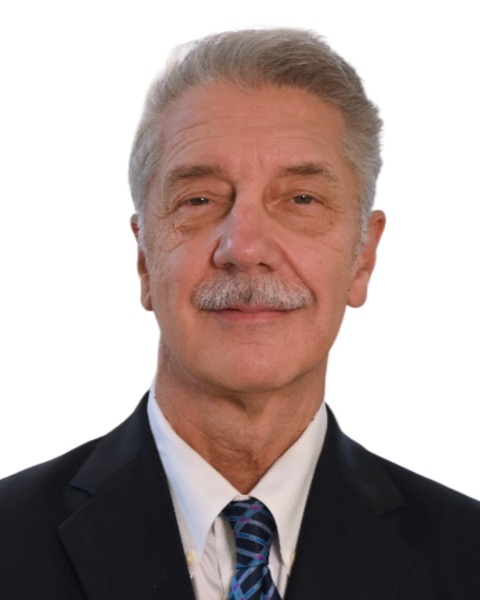Back
Introduction: Bromelain (BRM) is a mixture of proteolytic enzymes found in several parts of the pineapple (Ananas comosus) plant. BRM is widely administered for its well-recognized properties, mainly anti-inflammatory, antithrombotic and fibrinolytic, anticancer, and immunomodulatory. BRM gained universal acceptance as a phytotherapeutic agent due to its extensive dietary usage and lack of side effects; however, the complete molecular mechanism of action of BRM has not been completely identified. This exploratory study focuses on the erectile responses of human cavernosal strips on isometric tension measurements. In this study, we aimed to evaluate the effectiveness of (a) pure BRM (from pineapple stem, Sigma-Aldrich, St Louis, MO), (b) BRM dietary supplement (BG, Natural Brand Bromelain 500mg tablet, GNC, Pittsburgh, PA) and (c) fresh pineapple juice (PAJ) on human corpus cavernosum (HCC).
Methods: HCC tissues were obtained from men undergoing penile prosthesis implantation (n =8-10) and prepared for organ bath experiments as per our published procedures. BRM-induced relaxation response (10-8-10-3 M) was performed in vitro using HCC strips in an organ bath. The effects of inhibitors [NG-nitro-L-arginine methyl ester (L-NAME, 100µM), 1H-[1,2,4]-oxadiazolole-[4,3-a] quinoxalin-10one (ODQ, 30µM), and tetraethylammonium (TEA, 100 µM, blocker Ca2+ - activated K+ channels)] on BRM-mediated relaxation responses were evaluated. The relaxation effects of BRM, BG, and PAJ on phenylephrine (Phe)-induced contraction were also compared. The protein expression of endothelial (e) and neuronal (n) nitric oxide synthase (NOS) and vascular endothelium growh factor (VEGF) were determined using Western blotting and immunohistochemistry.
Results: BRM inhibited Phe-evoked contractions in a dose-dependent manner. All agents induced relaxation of HCC (maximum response: BRM- 62.87 ± 6.23%, BG - 61.95 ± 4.17%, PAJ -55.68 ± 5.52%) after Phe-contraction. Inhibitors of nitric oxide (L-NAME) and soluble guanylate cyclase (ODQ) as well as TEA failed to affect the BRM-induced HCC relaxations. The relaxant responses of HCC strips were observed in the presence or the absence of BRM products. Furthermore, eNOS and nNOS protein levels were decreased and were not restored after BRM, while VEGF levels remained unaltered.
Conclusions: These data suggest that BRM have the capacity to exert in vitro penile relaxations. The underlying mechanism of BRM is likely independent of the nitric oxide-cyclic guanosine monophosphate pathway. Overall, these in vitro studies suggested that consumption of BRM and its supplements may represent a novel strategy to prevent and treat erectile dysfunction in men, especially due to inflammatory issues. SOURCE OF
Funding: None.
Moderated Poster Session
Session: MP27: Sexual Function/Dysfunction: Basic Research & Pathophysiology
MP27-06: Bromelain induces relaxation of human corpus cavernosum tissue in vitro independent nitric oxide-cGMP pathway: Possible significance for erectile dysfunction
Saturday, April 29, 2023
7:00 AM – 9:00 AM CST
Location: S404C

Wayne John G. Hellstrom, MD (he/him/his)
Prof of Urology & Chief of Andrology
Tulane University School of Medicine
Poster Presenter(s)
Introduction: Bromelain (BRM) is a mixture of proteolytic enzymes found in several parts of the pineapple (Ananas comosus) plant. BRM is widely administered for its well-recognized properties, mainly anti-inflammatory, antithrombotic and fibrinolytic, anticancer, and immunomodulatory. BRM gained universal acceptance as a phytotherapeutic agent due to its extensive dietary usage and lack of side effects; however, the complete molecular mechanism of action of BRM has not been completely identified. This exploratory study focuses on the erectile responses of human cavernosal strips on isometric tension measurements. In this study, we aimed to evaluate the effectiveness of (a) pure BRM (from pineapple stem, Sigma-Aldrich, St Louis, MO), (b) BRM dietary supplement (BG, Natural Brand Bromelain 500mg tablet, GNC, Pittsburgh, PA) and (c) fresh pineapple juice (PAJ) on human corpus cavernosum (HCC).
Methods: HCC tissues were obtained from men undergoing penile prosthesis implantation (n =8-10) and prepared for organ bath experiments as per our published procedures. BRM-induced relaxation response (10-8-10-3 M) was performed in vitro using HCC strips in an organ bath. The effects of inhibitors [NG-nitro-L-arginine methyl ester (L-NAME, 100µM), 1H-[1,2,4]-oxadiazolole-[4,3-a] quinoxalin-10one (ODQ, 30µM), and tetraethylammonium (TEA, 100 µM, blocker Ca2+ - activated K+ channels)] on BRM-mediated relaxation responses were evaluated. The relaxation effects of BRM, BG, and PAJ on phenylephrine (Phe)-induced contraction were also compared. The protein expression of endothelial (e) and neuronal (n) nitric oxide synthase (NOS) and vascular endothelium growh factor (VEGF) were determined using Western blotting and immunohistochemistry.
Results: BRM inhibited Phe-evoked contractions in a dose-dependent manner. All agents induced relaxation of HCC (maximum response: BRM- 62.87 ± 6.23%, BG - 61.95 ± 4.17%, PAJ -55.68 ± 5.52%) after Phe-contraction. Inhibitors of nitric oxide (L-NAME) and soluble guanylate cyclase (ODQ) as well as TEA failed to affect the BRM-induced HCC relaxations. The relaxant responses of HCC strips were observed in the presence or the absence of BRM products. Furthermore, eNOS and nNOS protein levels were decreased and were not restored after BRM, while VEGF levels remained unaltered.
Conclusions: These data suggest that BRM have the capacity to exert in vitro penile relaxations. The underlying mechanism of BRM is likely independent of the nitric oxide-cyclic guanosine monophosphate pathway. Overall, these in vitro studies suggested that consumption of BRM and its supplements may represent a novel strategy to prevent and treat erectile dysfunction in men, especially due to inflammatory issues. SOURCE OF
Funding: None.
